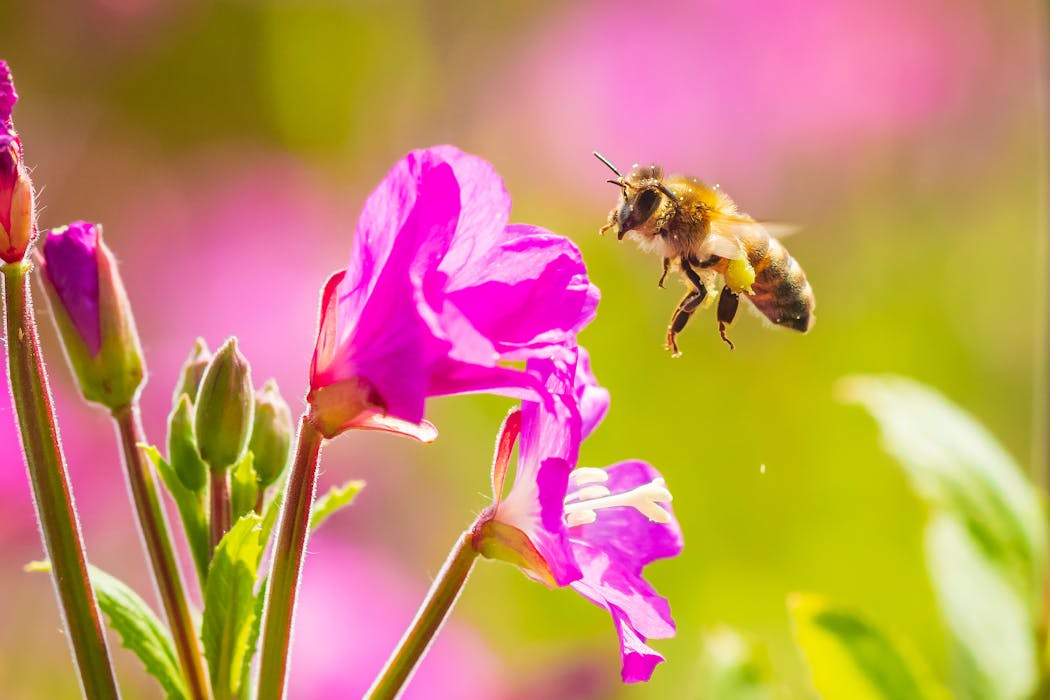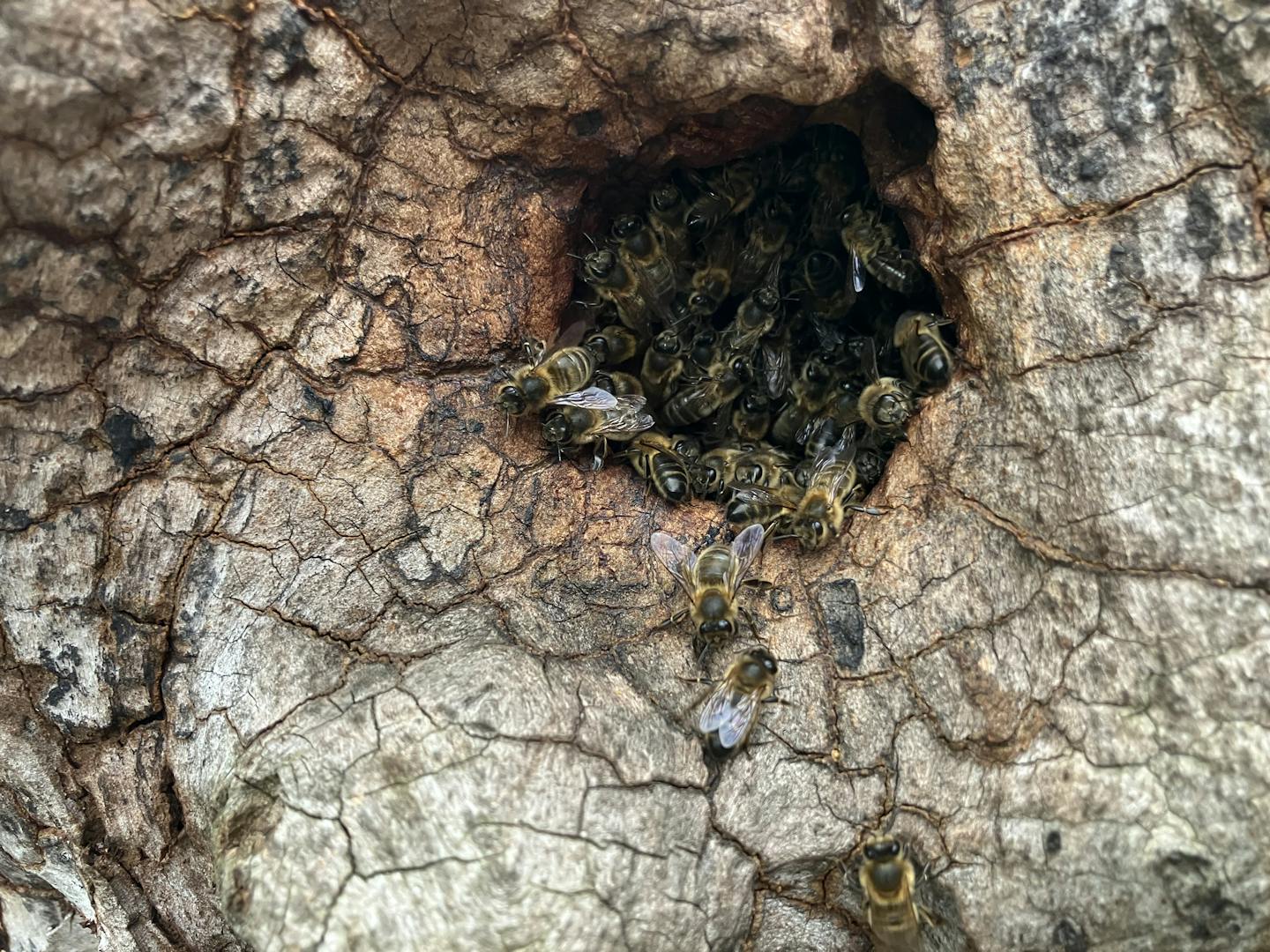
You might think honeybees are thriving – after all, the honey industry is growing and its bees are well looked after by beekeepers. But not all honeybees live in hives. Across Europe, colonies still live in the wild, nesting in tree cavities and other natural spaces, just as their ancestors did for millions of years.
Now, for the first time, these wild honeybee populations have been officially categorised as endangered within the European Union. That’s according to the latest update to the IUCN Red List, the world’s official database of species conservation statuses.
The western honeybee has a long history with humans. People have kept honeybee colonies for thousands of years, dating back to the ancient Egyptians who kept them in rudimentary hives to harvest honey. But it’s modern beekeeping, with its mobile hives and commercial pollination, that has had the widest impact on the species.
Because of that, today the western honeybee exists in two forms: the managed colonies kept in hives, and the wild ones that live independently of people. Both belong to the same species, Apis mellifera, but their lives and their prospects are radically different.
Managed honeybees have faced widely reported crises since the 2000s, when beekeepers around the world started noticing alarming losses in their hives. Since then, scientists have been working with beekeepers to investigate the causes and reduce colony mortality.
Because of this, the species as a whole is generally perceived as being under threat. But the reality is more complex than that. While it is true that managed colonies continue to suffer high losses, they are actively cared for by beekeepers and studied by researchers. The same cannot be said for their wild counterparts, which, until recently were relatively unstudied, especially in Europe.
The gap in knowledge led several European researchers to start investigating honeybees living freely in the wild. Such colonies have now been documented throughout Ireland and the UK, in national parks in France, the forests of Germany, Switzerland, and Poland, up and down Italy, and even in cities such as Belgrade in Serbia. These now are under study to understand if they can form self-sustaining populations capable of living without human help.
Tracking bees across Europe
To connect these independent research projects, a global initiative called Honey Bee Watch was formed in 2020. Its goal: to better understand how honeybees live in the wild. Under this coalition, I have been part of a team of 14 scientists and experts, who have worked with the International Union for the Conservation of Nature (IUCN) to reassess the conservation status of wild A. mellifera populations.

This formed part of a monumental effort to update the European Red List of Bees, led by researchers at the University of Mons in Belgium, which examined the conservation status of almost 2,000 species – many for the first time.
Back in 2014, wild A. mellifera populations had been listed as “data deficient” in Europe because there wasn’t enough information to answer a question that seemed simple enough: if a colony is found living in a tree, how can we tell whether it’s truly wild or has escaped from a managed hive?
A new definition of ‘wild’
Our new assessment took a different approach. Honeybees are not truly domesticated, since beekeepers have never been able to completely prevent them from breeding with other colonies, whether wild or managed. This means genetic differences between managed and wild colonies are often blurred.
Instead of trying to draw a genetic line separating the two, we adapted the IUCN’s definition of “wild” as it relates to honeybees. This meant we defined wild honeybee populations based on two criteria:
First, they live freely without management. And second, they can sustain their numbers independently without relying on the introduction of new colonies, such as those that escaped from managed hives.
Using ecology rather than genetics to define wild honeybees meant we could better evaluate their conservation status.
Endangered in the EU
Europe has the lowest density of free-living colonies in the world, as managed hives far outnumber wild ones. And, thanks to a recent analysis provided by our fellow assessors, we know that their numbers are declining.
Combined with evidence of habitat loss, invasive parasites, diseases, and human-mediated hybridisation, the picture that emerged was clear: wild honeybees are indeed in trouble.
That’s why their Red List status has now been updated to “endangered within the European Union.” However, for the wider pan-European region, they remain “data deficient” due to scarce data for areas such as the Balkans, the Baltics, Scandinavia and eastern Europe.
Protecting wild honeybees isn’t just about saving an iconic species – it’s about safeguarding our food security, biodiversity and ecosystems for the future. Populations surviving in the wild are those that naturally evolved the ability to cope with parasites, diseases and other harsh conditions that can devastate managed hives. They represent a vital genetic reservoir that could help make both wild and managed bees more resilient to future threats.
The new endangered assessment is a formal recognition that wild honeybees are native wildlife in need of conservation. We can no longer afford to leave them understudied and unprotected.
This article is republished from The Conversation, a nonprofit, independent news organization bringing you facts and trustworthy analysis to help you make sense of our complex world. It was written by: Arrigo Moro, University of Galway
Read more:
- Honey bees vote to decide on nest sites – why we should listen
- Honey bees are suprisingly abundant, research shows – but most are wild, not managed in hives
- Are rooftop beehives just a brand buzz exercise for companies?
Arrigo Moro does not work for, consult, own shares in or receive funding from any company or organisation that would benefit from this article, and has disclosed no relevant affiliations beyond their academic appointment.


 The Conversation
The Conversation Associated Press US and World News Video
Associated Press US and World News Video
 The Westerly Sun of Westerly
The Westerly Sun of Westerly The Columbian Life
The Columbian Life Associated Press Top News
Associated Press Top News People Top Story
People Top Story CNN
CNN Texas Monthly
Texas Monthly The Baltimore Sun
The Baltimore Sun Atlanta Black Star Entertainment
Atlanta Black Star Entertainment Raw Story
Raw Story